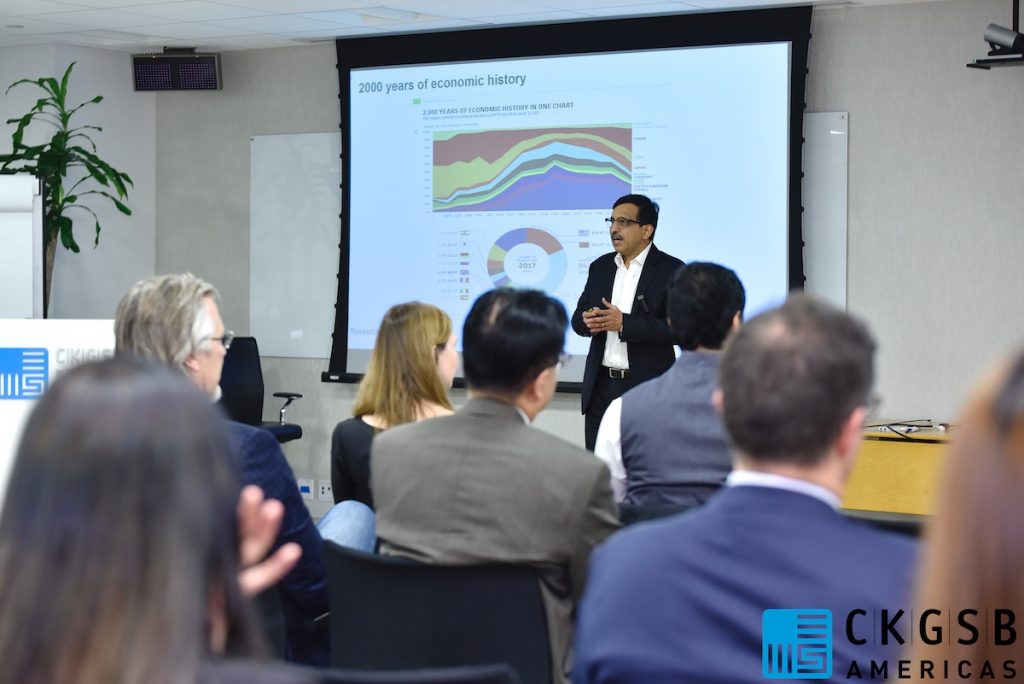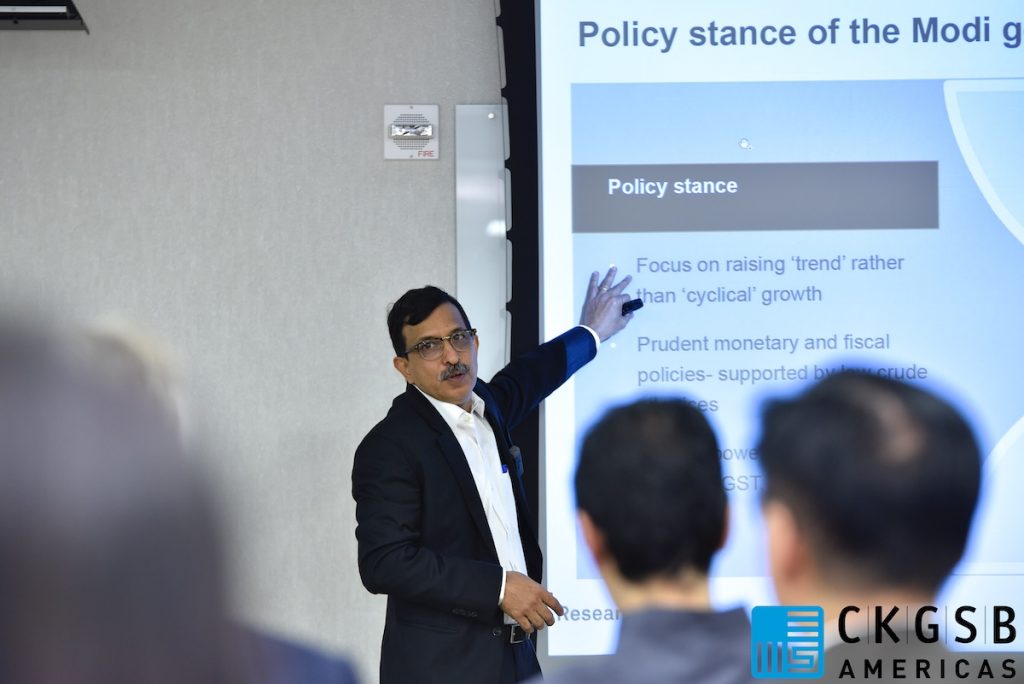The rebalancing in the Chinese economy is starting to move the needle on exports by the US and Europe to the Asian country although the process may take decades, the Chief Economist for the Asia-Pacific of S&P Global Ratings, Paul Gruenwald, said at a forum organized by CKGSB.
On the other hand, India’s economy will benefit from a young population and its economy has proven to be resilient in the face of shocks like nascent trade wars in the global economy, Dharmakirti Joshi, the Chief Economist of CRISIL who has over 20 years of experience in research and consultancy said in the same forum.
The two spoke at the Knowledge Series of CKGSB in New York.
Gruenwald said Chinese growth is rebalancing toward consumption.

“As a result, China’s trade patterns are changing (to) more imports of consumer goods and services,” he said. “So if China is importing more consumer goods and services, somebody must be exporting more consumer goods and services.”
For the EU and US, exports to China are moving steadily towards consumer goods, he said.
“China’s rebalancing has begun to move the needle for consumer goods and services exports from the EU and US. (But) this is likely to be a longer term story since China’s rebalancing will arguably take decades rather than years,” he explained.

While China wants access to technology and “know how” from the West, the West wants access to China’s rising middle class so this sounds like a good basis for discussions between the two sides in which talk is being dominated by trade conflicts, he stated.
The overhang though for global economies covers three areas, Gruenwald said.
The first is trade tensions, mainly between the U.S. and China, which “could escalate and spill over to activity more broadly (the first round effects are small.)”
The second would be U.S. interest rate normalization as the Federal Reserve gradually ups rates which could continue to create episodes of volatility and capital outflows from emerging markets.
The third risk to global economies is China’s high debt and the need to deleverage could result in a sharper than expected slowdown and spill over to global markets, he explained.
Gruenwald worked at the International Monetary Fund (IMF) for nearly 16 years, where he led the team producing the IMF’s Asian regional outlook reports. He was also the IMF Resident Representative to Hong Kong and Korea, the Deputy Chief of the China Division, and the country desk officer for Australia.
As for India, Joshi said the youthful population of the country and the demographic sweet spot that represents meant the working age group for the country will swell from 860 million in 2015 to 1.125 billion by 2050.

Joshi, who has extensive experience looking at macro trends of the Indian economy, said the country has proved to be “more resilient than in 2013 (as macro indicators are stronger).”
He said the quality of growth has improved in India, but not necessarily the rate.
“Macro stability will improve resilience to global shocks,” he said, adding the medium-term should show improved prospects for sustainable high growth under a low inflation environment.
What is seemingly key is the trend of increasing digitalization that is sweeping the country.
“(The) digitalization process has the potential to create the next wave of efficiency gains,” he said.

Joshi holds a master’s degree in economics from Punjab University, Chandigarh. He has attended the program on Macroeconomic Policy and Management at Harvard University and was a visiting scholar to Economic Research Unit of the University of Pennsylvania.